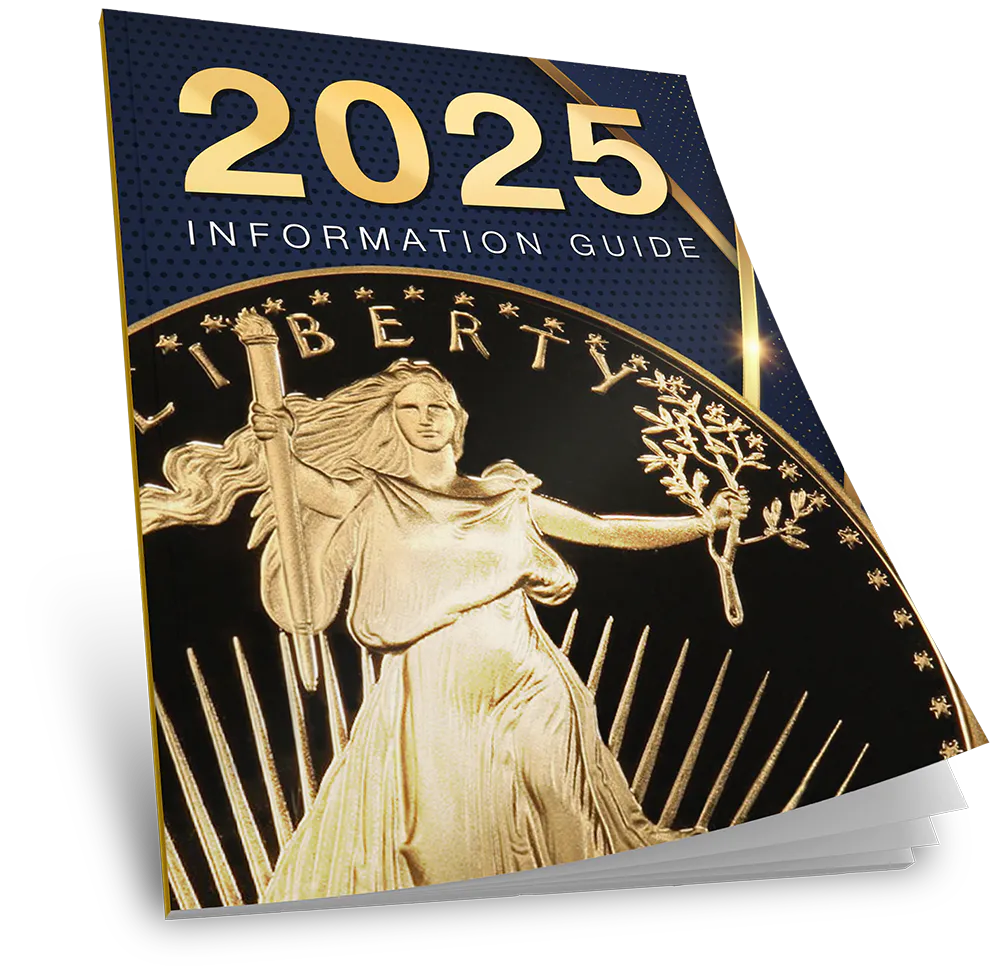- As national debt creates instability, experts propose linking the dollar to gold.
- Revaluing U.S. gold reserves can give the economy an $800 billion boost.
- Adding gold to a portfolio through a Gold IRA could protect wealth as gold gains prominence in monetary policy.
U.S. Government Looks to Gold
The government is turning its eye back to an old asset, and investors are taking notice. Gold is stepping back into the spotlight, not just as a safe haven for investors but as a key player in discussions about the nation’s financial future. Over the past 12 months, the price of gold has soared by more than 40%, doubling the S&P 500’s gain during the same period. This surge is part of a larger debate on how our monetary system is managed—and it might be time for a change.1
Dr. Judy Shelton is a Senior Fellow at the Independent Institute and former economic advisor to President Trump. She has been one of the most vocal critics of the current monetary system. She warns that the national debt and dollar instability are existential threats to the country. And urges a return to “sound money.”
Sound Money
Sound money is a concept rooted in the era of the gold standard. It means having a currency backed by a fixed amount of gold. This ensures stability, predictability, and a limited supply to help maintain value over time. Shelton argues that linking the dollar to gold could help rein in inflation. It could also tame the fiscal irresponsibility in our current fiat currency system. “The dollar used to be as good as gold,” she reminds us. Shelton proposes the government issue long-term Treasury Trust Bonds. Investors can choose at maturity to receive either the dollar value or a set amount of gold. This move would tie the dollar’s value to gold, preserving its purchasing power.2
.
 3
3
Driven by Debt
The urgency behind this proposal comes from the staggering national debt figures. Today, the debt exceeds $36 trillion. Debt service payments alone are costing billions of dollars each year. In just 50 years, the national debt has exploded from $400 billion in 1971 to over $36 trillion today. The Congressional Budget Office (CBO) now projects that servicing the debt from 2024 to 2033 will cost $10.6 trillion. That is double the forecast from 2021.4
Shelton blames runaway debt on the Federal Reserve’s “no limit” powers. The Fed can buy unlimited government debt. Hence, she believes decisions are based on financing government bills, not improving the economy. She warns the overpowered Fed can limit the economic agenda of a new president. And they could try to inflate away the U.S. government debt, eroding American purchasing power.
Revaluing America’s Gold
Adding a layer of complexity to the discussion is how the United States values its gold reserves. The U.S. holds the largest gold reserves in the world. It has 8,100 tons tucked away in the vaults of the Federal Reserve and the Treasury. Yet, these reserves are still recorded at a book value of $42.22 per ounce—a figure set by a 1973 agreement. With gold now trading at over $2,900 an ounce, this outdated valuation represents a potential windfall profit. It could earn roughly $800 billion for the Treasury Department if market values were applied.5
New Treasury Secretary Scott Bessent has hinted at a willingness to shake things up. He stated, “we’re going to put the assets to work,” signaling plans to “monetize the asset side of the U.S. balance sheet.” Rethinking the gold valuation could improve the Federal Reserve’s balance sheet dramatically. David Teeters is a professor at IESE Business School and former director at Barclays and BNP Paribas. He noted that an $800 billion mark-to-market gain would reduce the country’s borrowing as a percentage of its total assets.6

Currently, with gold valued at just $42 per ounce, the Federal Reserve’s owes-to-owns ratio stands at a staggering 179-to-1. If gold were revalued at around $3,000 per ounce, that ratio could drop to roughly 11-to-1. That figure more in line with ratios seen in major banks like Goldman Sachs. Although this revaluation would only be a one-off boost for the Treasury, it might create room for policy changes. Including potential tax cuts wanted by the Trump administration.
Stephen Miran is Trump’s nominee to lead the White House Council of Economic Advisers. He has floated a bolder idea. He suggested selling U.S. gold reserves to buy other currencies. Miran argues that this could weaken the dollar and give the U.S. a trade advantage. It could also counter de-dollarizing efforts by the BRICS nations. The sale would undermine their record gold buying spree.
David Teeters expressed the potential of gold in today’s monetary system. He said that one way to fix the money system is for countries to work together and lower the value of all currencies compared to something stable. Gold, which has been valuable for thousands of years, could serve this role. If this happens, gold could become dramatically more valuable.
Conclusion
The government is taking a fresh look at an age-old asset. Whether it’s a move toward sound money or a strategic revaluation of the world’s largest gold reserves, the yellow metal is becoming central to debates about our monetary future. With experts predicting that these trends will push gold to record heights, adding gold to your portfolio—especially through a Gold IRA—could protect and potentially grow your nest egg. To learn more about how gold can secure your financial future, call American Hartford Gold at 800-462-0071.





